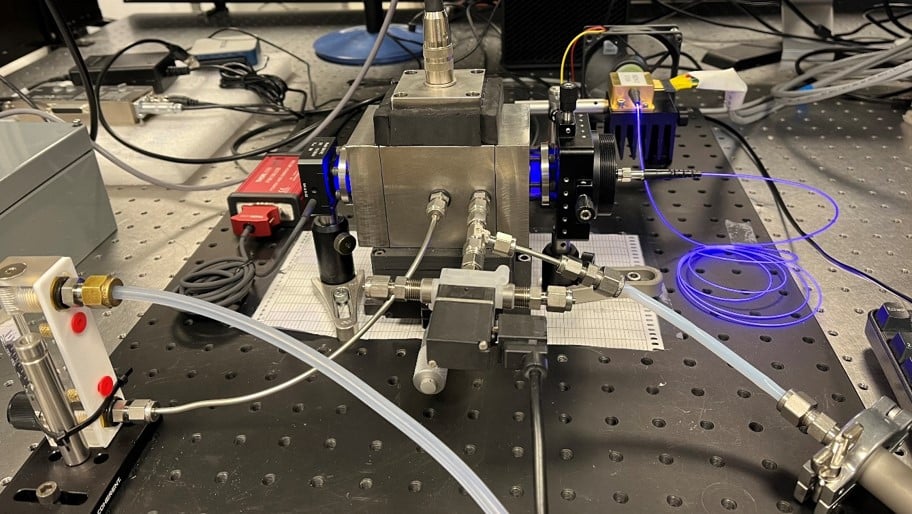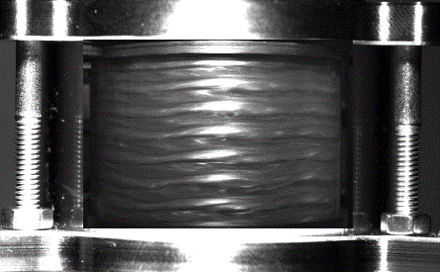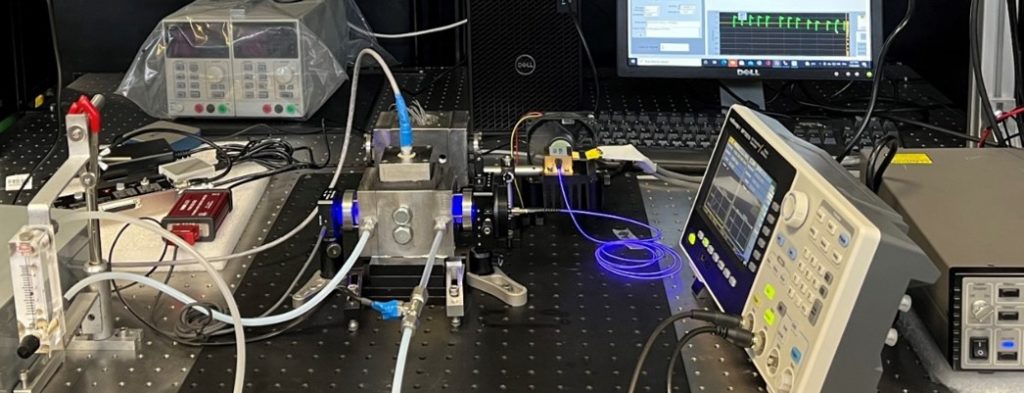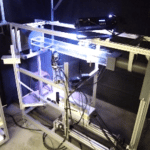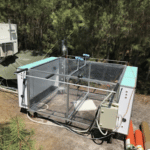Laser Doppler Anemometer, or LDA, is a single-point optical measurement technique that uses the Doppler shift of light principle to measure the velocity of flows seeded with particles acting as tracers which reflect light. This two-dimensional system (2D LD) is composed of a front lens (500 mm) from which two pairs of highly focused laser beams (90 mW) of different wavelengths (λ=632 and λ=532) are systematically emitted in two perpendicular planes. The measurement consists in determining the time it takes a tracer particle to pass through a measuring volume size (dx = 0.12 mm, dy = 0.12 mm and dz = 1.69 mm) formed by the intersection of the two pairs of beams. It therefore provides access to two velocity components in two directions. This 2D LDA system (Fig.1) enables very high temporal resolution velocity measurements (0.016 – 37 kHz).
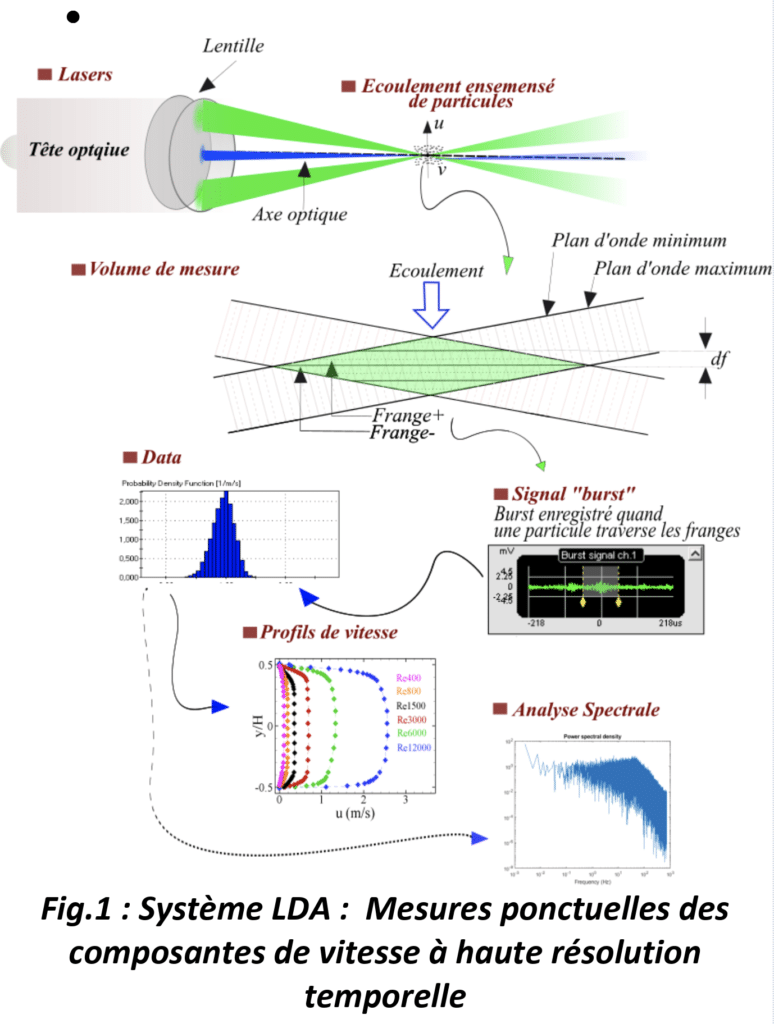
Stereoscopic Particle-Image Velocimetry (Stereo-PIV or SPIV) is a planar measurement technique. This technique consists in using two high resolution cameras (Flow Sens, Speed Sens, CX) with the “Scheimpflug angle” as an observation angle to measure the three components of flow velocities in a laser plane (Litron ND:YAG Nano L50-100) double pulse laser: (60 MJ, 100 Hz, λ=532 μm). The successive images that are captured are subdivided into small interrogation windows in order to determine the average displacement of the tracer particles. Cross-correlations (adaptive correlation) followed by processing with an algorithm (UODA) for identifying erroneous vectors are used to accurately detect these displacements. During the first step, the two velocity components (in plane) are calculated based on the known time difference (laser pulse time). A velocity field reconstruction and calibration procedure is used to determine the third velocity component (out of plane). Image processing can be performed to correct image distortion caused by the perspective effect. Instantaneous and mean fields for the various velocity directions are determined in this manner.
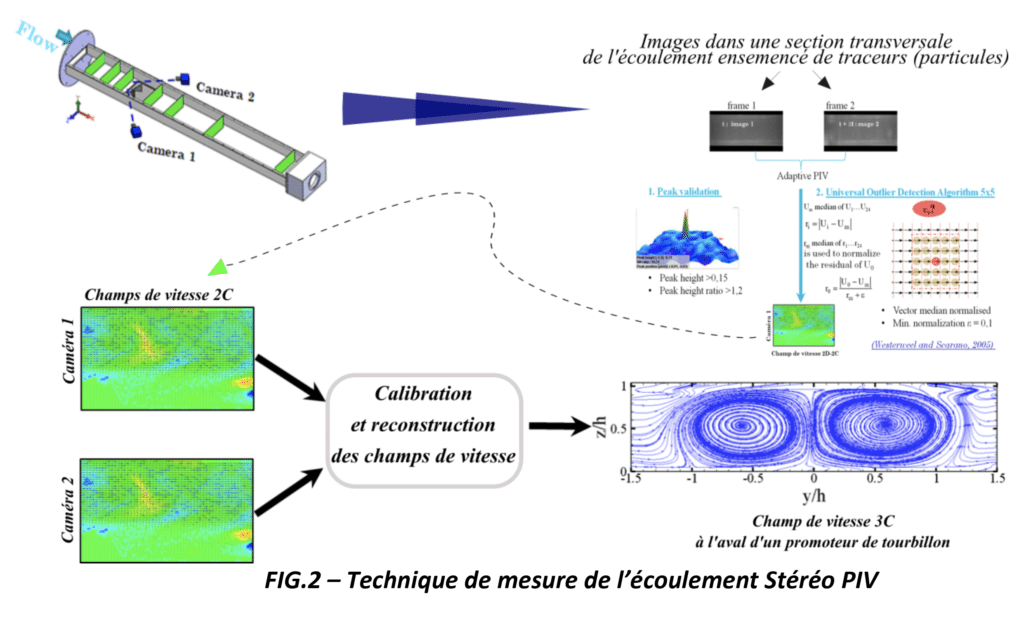
Planar laser-induced fluorescence (PLIF): The planar laser-induced fluorescence method involves seeding the flow with a fluorophore (fluorescent molecule) and recording its local fluorescence intensity under laser excitation with one of several cameras. Prior calibration makes it possible to link the fluorescence intensity measured to a scalar quantity of the flow such as fluorophore concentration, temperature or pH. This method can be applied to points (1D) or a plane (2D). When combined with velocimetry methods, PLIF provides access to scalar flows in the flow and offers a better understanding of transfer and mixing mechanisms and their intensification.
The Background Oriented Schlieren (BOS) method: The BOS method is a technique for visualising flows with optical index gradients (related to temperature, fluid composition, compressibility, etc.). It accomplishes this through the apparent distortion of a reference object, caused by the deviation of light rays coming from this object when they encounter optical index gradients, which is observed with a camera. Image analysis techniques (optical flow, cross-correlation) make it possible to measure the displacements and, depending on the geometry, link them to the index gradients encountered or to the temperature. The advantage of BOS is that it enables rapid qualitative visualisation of flows without the need for a laser source or seeding. Educational and low budget developments were also proposed as part of the SPINEL and SAFIRE projects.

